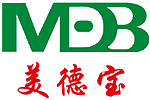-
-
Company Profile
-
Waterproof breathable membrane
Vapor barrier film
Barrier film
Reflective insulation film
The Ultimate Guide to TPO Waterproofing Membrane
Release time:
2025-03-03
TPO (Thermoplastic Olefin) waterproofing membranes have gained significant traction in the construction and decoration materials industry due to their excellent performance characteristics and versatility. Primarily used in roofing applications, TPO membranes are made from a blend of polypropylene and ethylene-propylene rubber, resulting in a durable, flexible product that can withstand a range of environmental conditions.
One of the standout features of TPO waterproofing membranes is their energy efficiency. Many TPO membranes are manufactured with reflective surfaces that can reduce energy costs by reflecting solar rays, thus lowering cooling loads in buildings. This capability not only contributes to environmental sustainability but also makes TPO an economically viable option for long-term projects.
In terms of installation, TPO membranes are praised for their ease of use. They are typically available in large rolls, which minimize the number of seams and potential leak points when applied. Seam strength is critical in waterproofing applications, and TPO membranes can be thermally welded, creating strong, watertight seams that enhance their overall effectiveness. Moreover, their lightweight nature makes handling and installation more manageable, reducing labor costs and time on the job site.
TPO waterproofing membranes are also known for their resistance to various environmental factors, such as UV radiation, chemical exposure, and punctures. This makes them suitable for various applications beyond roofing, including below-grade waterproofing, plaza decks, and even green roofs. Their flexibility allows them to adapt to the underlying structure, accommodating building movements while maintaining integrity.
From a maintenance perspective, TPO membranes are low-maintenance materials. Their smooth surfaces allow for easy cleaning and inspection, which can prolong the membrane's lifespan. In cases where repairs are necessary, they can often be accomplished efficiently without the need for extensive surface preparation.
Lastly, while selecting a waterproofing membrane, it's essential to consider local building codes and environmental regulations. TPO membranes are often compliant with various standards, making them a reliable choice for architects and builders aiming to meet stringent construction guidelines.
In conclusion, TPO waterproofing membranes offer a robust solution for waterproofing needs in the construction industry. Their energy efficiency, ease of installation, durability, and low maintenance requirements make them a valuable addition to any building project. By understanding the benefits and applications of TPO membranes, you can make informed decisions that will contribute to the success and longevity of your projects.Previous article
recommend News
Newest Pvc Waterproofing Membrane
2025-03-27
Sell one
Kelly Ho
15133606577
kelly.ho@tjmeidebao.com
Sales two
All- All
- Product Management
- News
- Introduction
- Enterprise outlets
- FAQ
- Enterprise Video
- Enterprise Atlas
Sweep the attention to us

COOKIES
Our website uses cookies and similar technologies to personalize the advertising shown to you and to help you get the best experience on our website. For more information, see our Privacy & Cookie Policy
COOKIES
Our website uses cookies and similar technologies to personalize the advertising shown to you and to help you get the best experience on our website. For more information, see our Privacy & Cookie Policy
These cookies are necessary for basic functions such as payment. Standard cookies cannot be turned off and do not store any of your information.
These cookies collect information, such as how many people are using our site or which pages are popular, to help us improve the customer experience. Turning these cookies off will mean we can't collect information to improve your experience.
These cookies enable the website to provide enhanced functionality and personalization. They may be set by us or by third-party providers whose services we have added to our pages. If you do not allow these cookies, some or all of these services may not function properly.
These cookies help us understand what you are interested in so that we can show you relevant advertising on other websites. Turning these cookies off will mean we are unable to show you any personalized advertising.
Copyright: Tianjin Medabao Technology Co., Ltd.
Business License
-


